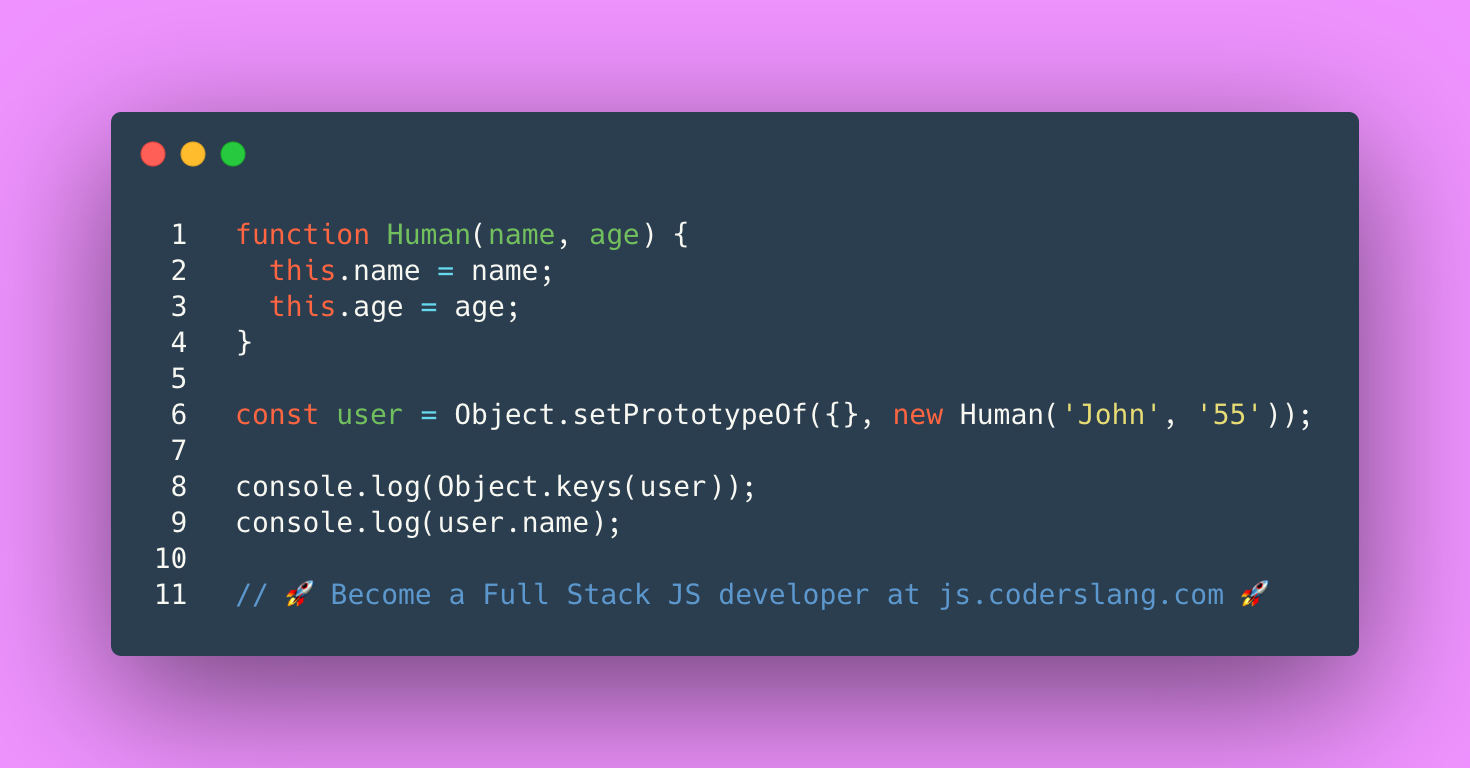
What is Object.setPrototypeOf in JavaScript? How does it work? What’s the output?
.
.
.
.
.
.
.
.
.
.
.
.
.
.
.
.
.
Theory
The function Object.setPrototypeOf sets the new prototype for any JavaScript object. The object itself doesn’t change, but it “inherits” the behavior of the object used in setPrototype.
You can check it by accessing the __proto__ property before modifying the prototype and after it.
For example, let’s create an object with a single field name and and an array with 3 elements.
const user = { name: 'John' };
const arr = [ 1, 2, 3 ];
console.log('Original state');
console.log(user); // { name: 'John' }
console.log(user[1]); // undefined
console.log(user.__proto__); // {}
console.log(user.length); // undefined
Object.setPrototypeOf(user, arr); // добавляем прототип arr к user
console.log('Modified state');
console.log(user); // Array { name: 'John' }
console.log(user[1]); // 2
console.log(user.__proto__); // [ 1, 2, 3 ]
console.log(user.length); // 3
After modifying the prototype of the user, we got access to the “parent” field length and “inherited” the elements of the array arr. Now we can access them by index.
Practice
In our original code snippet happens the same. The user object gets access to the field name from the object of a type Human, but it won’t get any new fields.
The function Object.keys returns an array formed by all the fields that the object has. But not the “inherited” ones. As the user object doesn’t have any “own” properties, the length of this array is 0.
ANSWER: The first console.log prints an empty array to the screen, and the second one prints the string John.